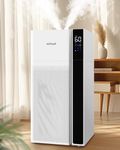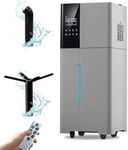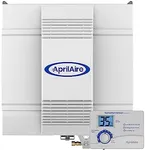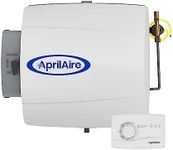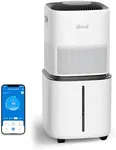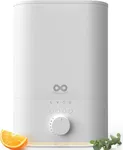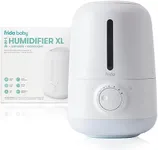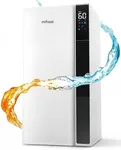Buying Guide for the Best Whole House Humidifiers
Choosing the right whole-house humidifier is essential for maintaining a comfortable and healthy indoor environment. A whole-house humidifier can help alleviate dry skin, reduce static electricity, and protect wooden furniture and floors from drying out. To make an informed decision, it's important to understand the key specifications and how they relate to your specific needs. Here are the main factors to consider when selecting a whole-house humidifier.Coverage AreaThe coverage area indicates the maximum square footage that the humidifier can effectively humidify. This is important because you want to ensure that the humidifier can handle the size of your home. Coverage areas are typically divided into small (up to 1,000 sq. ft.), medium (1,000-2,500 sq. ft.), and large (over 2,500 sq. ft.). To pick the right one, measure the total square footage of your home and choose a humidifier that can cover at least that amount.
Humidification MethodThere are different methods of humidification, including evaporative, steam, and ultrasonic. Evaporative humidifiers use a wick filter to absorb water and a fan to blow air through it, adding moisture to the air. Steam humidifiers boil water to create steam, which is then dispersed into the air. Ultrasonic humidifiers use high-frequency vibrations to produce a fine mist. Each method has its pros and cons: evaporative models are energy-efficient and low-maintenance, steam models provide consistent humidity levels but use more energy, and ultrasonic models are quiet but may require more frequent cleaning. Choose the method that best fits your lifestyle and maintenance preferences.
Water CapacityWater capacity refers to the amount of water the humidifier can hold at one time. This is important because it determines how often you will need to refill the unit. Water capacities can range from a few gallons to over 10 gallons. If you prefer less frequent refilling, opt for a model with a larger water capacity. However, keep in mind that larger tanks may also mean a bulkier unit.
Control OptionsControl options include manual controls, digital controls, and smart controls. Manual controls are straightforward and easy to use but offer limited precision. Digital controls provide more accurate humidity settings and often include features like timers and humidity level displays. Smart controls allow you to monitor and adjust the humidifier remotely using a smartphone app. If you value convenience and precision, digital or smart controls may be the best choice for you.
Installation TypeWhole-house humidifiers can be installed in different ways, such as bypass, fan-powered, or steam. Bypass humidifiers are connected to the HVAC system and use the system's airflow to distribute moisture. Fan-powered humidifiers have their own fan to push air through the unit, making them more efficient but also more complex to install. Steam humidifiers generate steam and inject it directly into the air ducts. Consider your HVAC system and installation preferences when choosing the type of humidifier. Professional installation may be required for some models.
Maintenance RequirementsMaintenance requirements vary depending on the type of humidifier. Evaporative models typically require regular cleaning of the wick filter, while steam models may need periodic descaling to remove mineral buildup. Ultrasonic models may require frequent cleaning to prevent mold and bacteria growth. Consider how much time and effort you are willing to invest in maintenance when selecting a humidifier. Models with easy-to-access components and fewer maintenance needs may be more suitable for busy households.
Noise LevelNoise level is an important consideration, especially if the humidifier will be installed near living or sleeping areas. Evaporative and ultrasonic humidifiers are generally quieter than steam models. Noise levels are usually measured in decibels (dB), with lower numbers indicating quieter operation. If noise is a concern, look for models with a noise level of 30 dB or lower.


